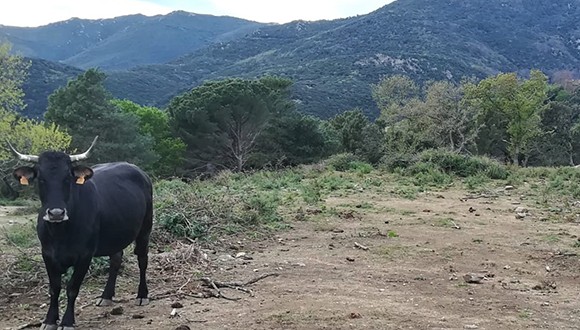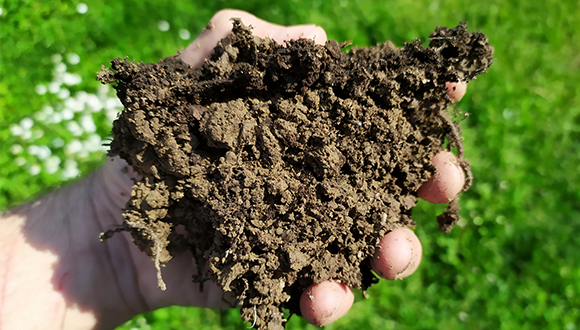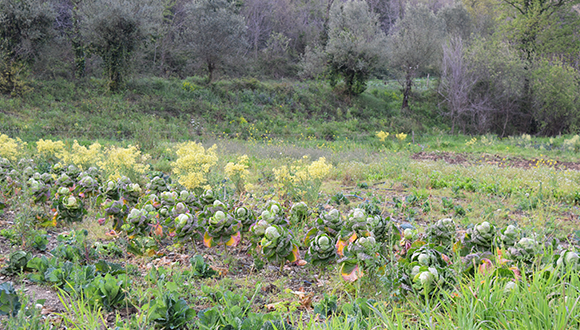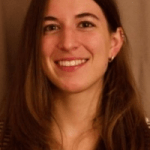Healthy soil is essential to achieve food sovereignty
More than 90% of Earth's agricultural land will be degraded by 2050, according to the recent article ‘Let’s #StopSoilErosion to ensure a food secure future' published by the United Nations Food and Agriculture Organization (FAO). A degraded soil is infertile and can seriously reduce its agricultural performance. Recovering the fertility of degraded land is therefore essential for a region to move towards greater food sovereignty.

The main human activities responsible for the loss of land value are overgrazing, intensive agriculture and deforestation.
Traditional agricultural methods involve constant and intensive work in the soil.
Traditional agricultural methods involve constant and intensive work in the soil: they use large monoculture plots, which deplete the nutrients of the land, use machinery and procedures dependent on oil and the agrochemical industry that, in addition to polluting, impoverishes biodiversity and eliminates much of the vegetation cover, whose roots prevent soil erosion.

An alternative to conventional agrarian and livestock practice, which generates this wear, is regenerative agriculture, based on recovering the soil's own fertility and increasing its ability to produce food in a sustainable way. This type of agriculture helps to create and maintain habitat conditions for the functioning of healthy soil, enriching the content of organic matter and favouring its porosity and its capacity to retain water. Contrary to the conventional one, it does not require tilling the soil with high-powered tractors and avoids the use of insecticides, fungicides and chemical fertilizers that cause dependency on large multinationals.
Regenerative agriculture, is based on recovering the soil's own fertility and increasing its ability to producefood in a sustainable way.
Healthy soil is a living system
The organic matter content, the water retention capacity and the richness of biodiversity are indicators of fertile soil. A healthy soil is, therefore, a living and dynamic ecosystem where a great variety of plants, microorganisms, insects and vertebrates interact with each other, while enriching the content of organic matter and nutrients in the soil. A healthy soil, in addition, contributes to the mitigation of climate change because it is capable of storing more carbon than infertile soil.

A healthy soil is, therefore, a living and dynamic ecosystem where a great variety of plants, microorganisms, insects and vertebrates interact with each other.
Degraded soil loses biodiversity and organic matter, absorbs less water and has less capacity to retain nutrients. A country that does not have fertile land is not capable of producing food, or of deciding on its own agricultural and food policies. Supporting sustainable agriculture projects is an essential step to recover lost fertility and move towards greater food sovereignty.
The Polyfarming project, an example of regenerative agriculture
The recovery of degraded soil to make it evolve into fertile terrain is the objective of the Polyfarming pilot project, co-financed by the LIFE program of the European Commission and led by CREAF. The purpose of this initiative that is put into practice at the Les Planeses farm in La Garrotxa (Girona, Catalonia) is "to demonstrate that agriculture and livestock are great allies to recover a living soil", according to Marc Gràcia, its scientific coordinator.

The project takes advantage of forest resources, livestock and farm crops, as a circular economy. Polyfarming proposes alternatives such as intensive grazing with cows and mobile chicken pens, which help to fertilize the soil, while allowing livestock to enjoy fresh pasture every day. A way of "taking into account the relationship between plant and animal", in the words of Marc Gràcia. In addition, forest resources such as biochar, BRF or biofertilizers are used which "not only improve fertility, but they better absorb and retain water and sequester atmospheric carbon in the soil."
The project takes advantage of forest resources, livestock and farm crops.
The pilot project in Les Planeses started in 2016 and results are already observed in the fertility of the land. "The current production system would not have had any chance. We started the project a few years ago and we are already seeing an increase in the fertility of the land”, says its scientific coordinator. One of the objectives is to increase the organic matter content of the soil twice and go from the initial 2% to 4% at the end of the project in 2021.

We cannot speak of food sovereignty if it is not a model that allows the entire population to be fed affordable. To achieve this, changes in the production system are linked to new eating habits and a new way of buying.
But we cannot speak of food sovereignty if it is not a model that allows the entire population to be fed affordably. To achieve this, changes in the production system are linked to new eating habits and a new way of buying. According to Marc Gràcia, "the value of regenerative agriculture is that it allows local and sustainable production that offers seasonal, nutritive products, produced with techniques that allow CO2 to be sequestered in the soil, in addition to improving the local economy."
What can you do?
Products that come from organic agriculture are those that meet the relevant government certifications, but are more permissible from an environmental point of view compared to regenerative agriculture, which is also organic, but emphasizes in recovering soil health and in sequestering carbon in the soil to mitigate climate change.

Nowadays, one can choose responsible consumption and help maintain fertile soil with our way of eating. There are many local initiatives that sell their products through ecological cooperatives or online platforms. For example, the Spanish platform ‘Carne de Pasto’ provides information on producers that produce grass meat nationwide. In Catalonia we can explore Espai i Seny, an initiative that encourages local and organic consumption.
Nowadays, one can choose responsible consumption and help maintain fertile soil with our way of eating.
To deepen the concept of regenerative agriculture, you can visit the Spanish Regenerative Agriculture and Livestock website. Polyfarming also offers informative resources on its website to find out what this type of agriculture is and how to apply it at the farm level.







